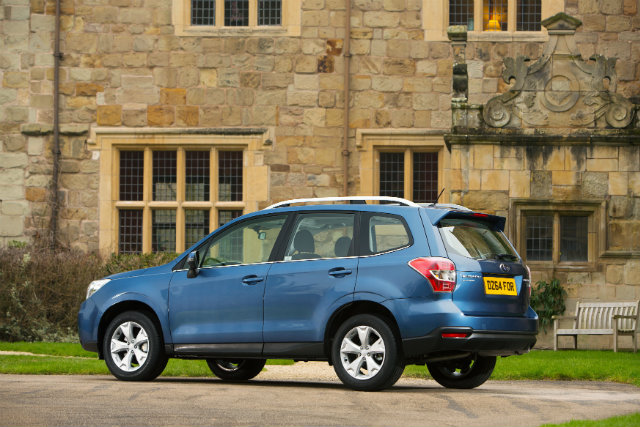Subaru began building Foresters back in 1997, but only in April 2015 did it become possible to buy one with a diesel engine and automatic transmission in the UK.
Recent modifications notwithstanding, the 148bhp 2.0-litre engine is now quite familiar, though it took Subaru time to reconcile the need for a diesel unit with its policy of building engines of the low-set "boxer" layout. The Lineartronic six-speed transmission automatically switches between gears and is about £1,500 more expensive than the standard six-speed manual gearbox.
The Lineartronic is the more impressive of the two though, moving smoothly from one gear to the next, whereas the manual has a disappointing shift quality.
Constant whirring and gurgling make the engine less appealing, but it performs well and should, unless you drive it hard, come close to the official combined economy figure of 46.3mpg. CO2 emissions for this spec are 158g/km, the worst of any diesel Forester but below the lowest figure achieved by any of the petrol models.
The driving experience is a bit of a puzzle. There are still echoes of the superb handling found in first-generation Foresters, particularly on well-surfaced roads where there's time for the suspension to deal with any undulations.
Sharper bumps make it trip over its shoelaces, and I'm not sure why this should be. Subaru clearly has some very talented chassis engineers, but they need to have a rethink on the high-speed damping.

The company does, on the other hand, have a record of providing above-average levels of visibility, and the Forester is certainly good in this respect. There's also ample room for very large passengers, while luggage capacity is decent at 505 litres with the rear seats up and 1,573 litres when they're down. That’s despite having a very high boot floor made necessary by the presence of a space-saver spare wheel underneath.
The cabin has been upgraded for the 2015 model year, but it still suggests that Subaru has little enthusiasm for interior design. The materials feel cheap and the styling is ordinary, with the exception of the graphics on the satellite navigation.
Unlike some, they don't make you feel you have fallen into a high-budget Hollywood movie every time you look at the central touchscreen. However, the range of pastel colours is attractive and the required information is clearly given.
Sat-nav isn't available on all Foresters, but it is on this one, which at £30,995 is the equal most expensive car in the range. Standard equipment also includes 18-inch wheels (which don't produce a noticeably worse ride than the 17s fitted to cheaper models), cruise control, two USB ports, a reversing camera and leather upholstery.



